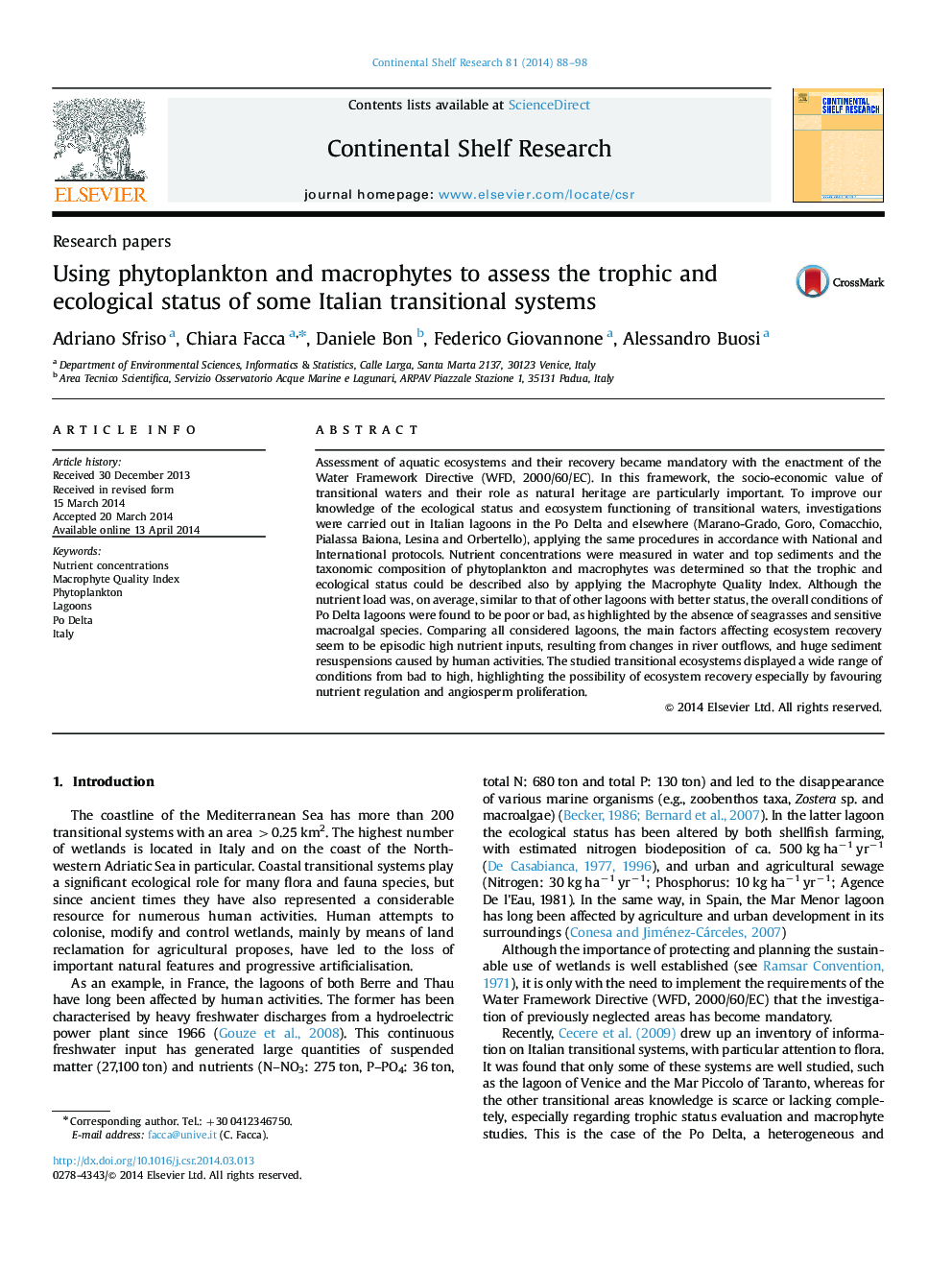| کد مقاله | کد نشریه | سال انتشار | مقاله انگلیسی | نسخه تمام متن |
|---|---|---|---|---|
| 4531907 | 1626131 | 2014 | 11 صفحه PDF | دانلود رایگان |
• Nutrients, phytoplankton and macrophytes were measured in several Italian lagoons.
• Trophic and ecological status were assessed according to the European regulation.
• The Macrophyte Quality Index highlighted poor-bad conditions at several sites.
• Degraded conditions seem to depend on periodic increases in nutrient inputs.
• Good-high conditions were recorded showing how the environment can be improved.
Assessment of aquatic ecosystems and their recovery became mandatory with the enactment of the Water Framework Directive (WFD, 2000/60/EC). In this framework, the socio-economic value of transitional waters and their role as natural heritage are particularly important. To improve our knowledge of the ecological status and ecosystem functioning of transitional waters, investigations were carried out in Italian lagoons in the Po Delta and elsewhere (Marano-Grado, Goro, Comacchio, Pialassa Baiona, Lesina and Orbertello), applying the same procedures in accordance with National and International protocols. Nutrient concentrations were measured in water and top sediments and the taxonomic composition of phytoplankton and macrophytes was determined so that the trophic and ecological status could be described also by applying the Macrophyte Quality Index. Although the nutrient load was, on average, similar to that of other lagoons with better status, the overall conditions of Po Delta lagoons were found to be poor or bad, as highlighted by the absence of seagrasses and sensitive macroalgal species. Comparing all considered lagoons, the main factors affecting ecosystem recovery seem to be episodic high nutrient inputs, resulting from changes in river outflows, and huge sediment resuspensions caused by human activities. The studied transitional ecosystems displayed a wide range of conditions from bad to high, highlighting the possibility of ecosystem recovery especially by favouring nutrient regulation and angiosperm proliferation.
Journal: Continental Shelf Research - Volume 81, 15 June 2014, Pages 88–98
